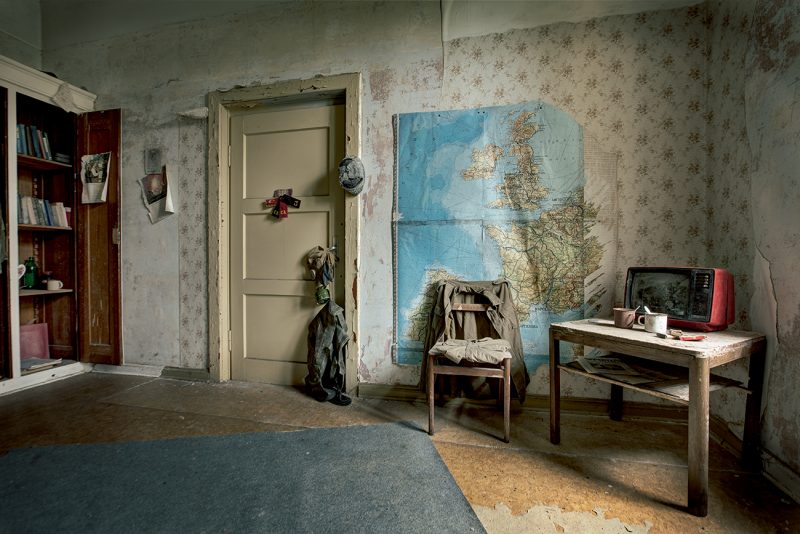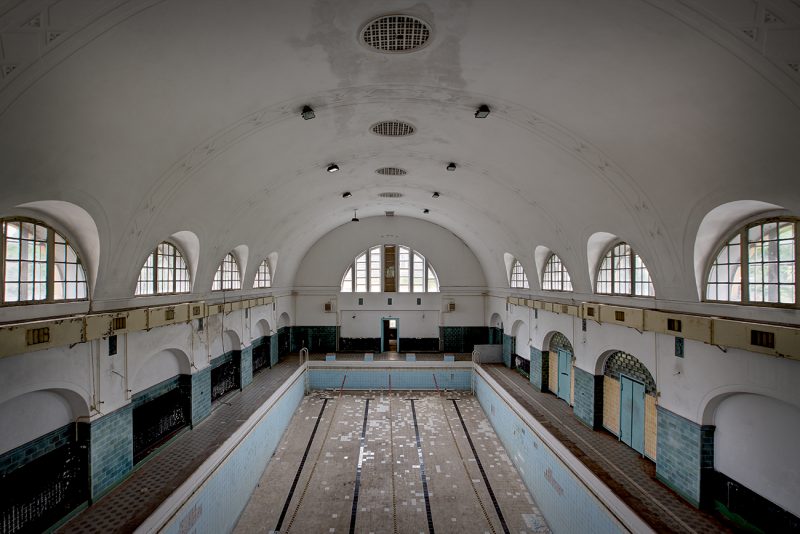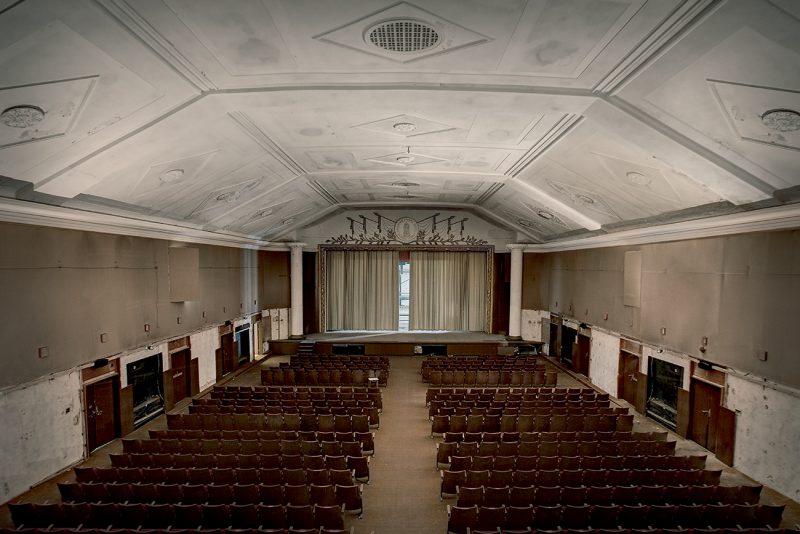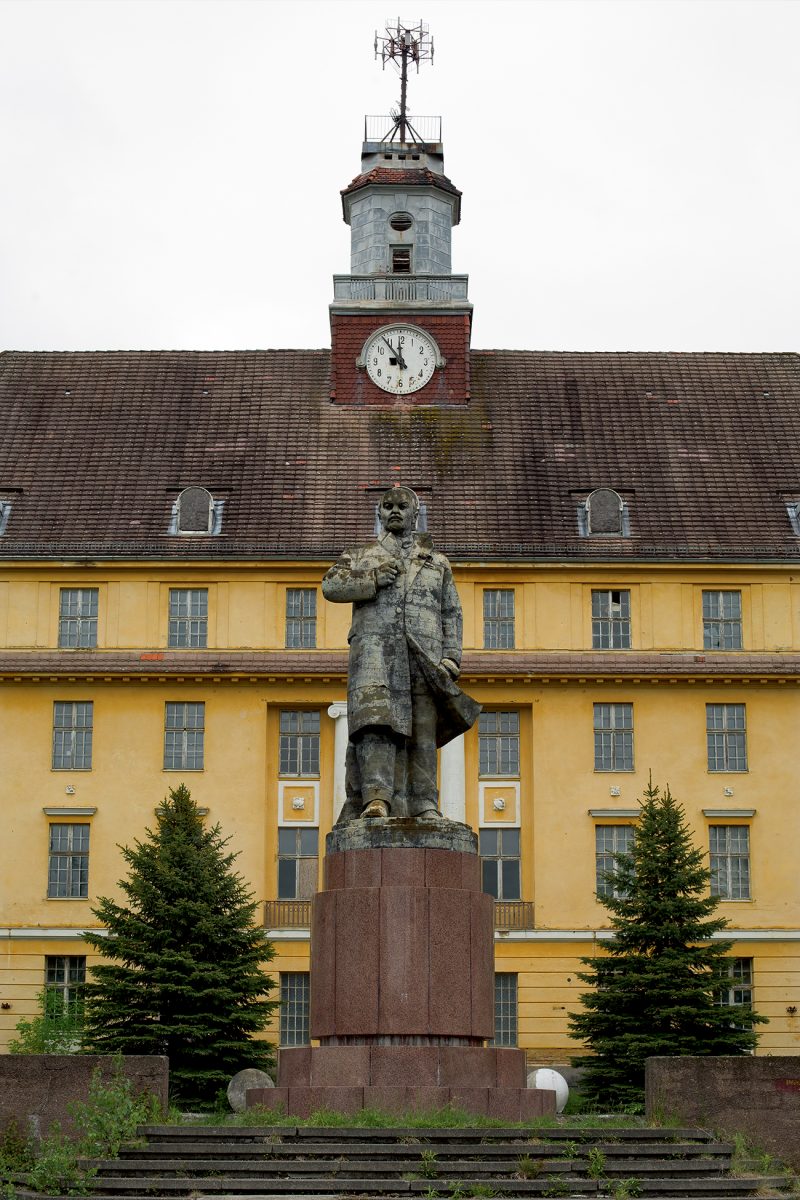What once was the meticulously-groomed Wunsdorf facility, about 25 miles from Berlin, now suffers from a lack of attention and is turning into rubble encased in overgrown weeds. Wundsdorf had been built in the 1800s, once served two German Kaisers before it became a center for the Nazis, and was the Soviet army’s biggest war base in Germany during WWII, housing tens of thousands of Red Army soldiers. Now its clock on the bell tower is stuck at 11:16 am, the exact moment when the Russians pulled out of Wunsdorf in August of 1994.
The person who owns it now has agreed to put the building up for sale, purportedly for three million pounds, as long as its new owner promises to restore the entire building to what it once looked like.
Dark stories loom over Wunsdorf; people remember that it was Vladimir Illyich Ulyanov, who was the former Soviet leader responsible for more than four million deaths, that was known as the master of the Wunsdorf town.

The building is under constant watch by a man named Juergen Naumann, a veteran of 19 years who fought with the Peoples’ Army of the German Democratic Republic. Naumann had been at Wunsdorg since the Russian soldiers came to take part in the war. He said that the building had so much potential but many people refused to use it.
He recalls that at one time there were 50,000 people in the facility. The prisoners had the job of cleaning the place from top to bottom. It was said that the floor was so clean people could eat right off it. There was even a joke that the leaves on the trees were polished.
He said that once the war ended and Wunsdorf was vacant, the authorities offered schools use of the pool in the facility, but they all turned it down. While much of the building is crumbling, Naumann says that the shell is still structurally sound but will need work. Inside the facility lies memories and photographs of the soldiers who were stationed there. The sports hall, once held under the Third Reich, is still known as a legacy of the veterans and soldiers who fought against Nazism and demolished it. Nearly 27 million Russians died in the Great Patriotic War.

In one abandoned room in the facility are photographs depicting a German invader and some photos of the people who suffered under him. On the opposite wall is a different shrine of two soldiers and a mother and child carved from stone. Many historians believe that since there wasn’t a church nearby, the soldiers needed somewhere to give worship and used Wunsdorf for this purpose. That’s why there are so many shrines there.
There are still medals that the Soviet officers won on sports fields, as well as trophies and badges. What is interesting is that the sports field the Soviet officers used is the same one the Nazi Wehrmacht trained on before being unleashed on Soviet Russia in 1941, leading to the four-year campaign. The Soviets then stayed for nearly 50 years.
Naumann recalled the train running until the beginning to the end of the war, carrying soldiers and supplies. Whatever the Russians did not have at Wunsdorf, they ended up importing, which gave the area a little more culture. This included the theater, which in turn brought in their language and their actors. The theater was attended by the officers of the Russian army.
Along with the soldiers’ shrines, Wunsdorf was also filled with artwork, mainly murals which some would describe as Soviet. These murals included power plants, coalmines, and even some of the dwarfs from Snow White and the Seven Dwarfs.
The soldiers stationed at Wunsdorf would have taken posts in Germany over being in Russia any day. The same went for the officers, as Wunsdorf had many more luxuries than the posts in Russia, such as hot water and drainage systems. In fact, they were so excited about those luxuries that they ripped the toilets out and took them back to Russia with them after the war.

Naumann, being the only gatekeeper, is particularly saddened by how badly time has left what once was a beautiful facility. Due to the lack of resources and money, he doesn’t have much of a choice but to fix what he can. He is most saddened about state of the pool, which still has its original 1890s tiles.
The one thing Naumann misses about his wartime experience is the togetherness he felt with other soldiers. He also misses how friendly the men were to civilians. While the officers disciplined the soldiers hard while fighting, the soldiers had kind hearts and were kind to others.
Naumann hopes that someone will eventually buy the building to restore it, sooner rather than later.
